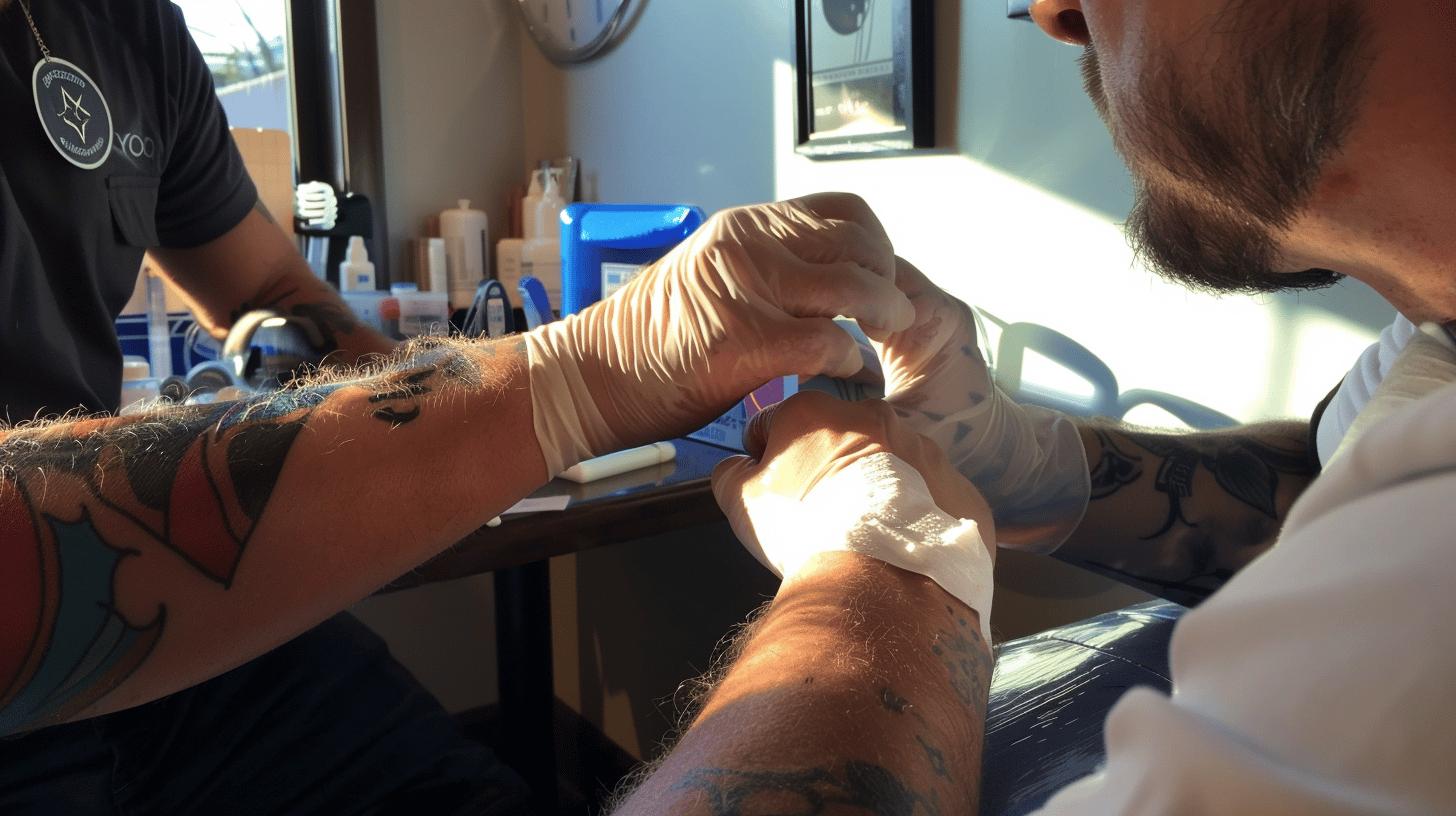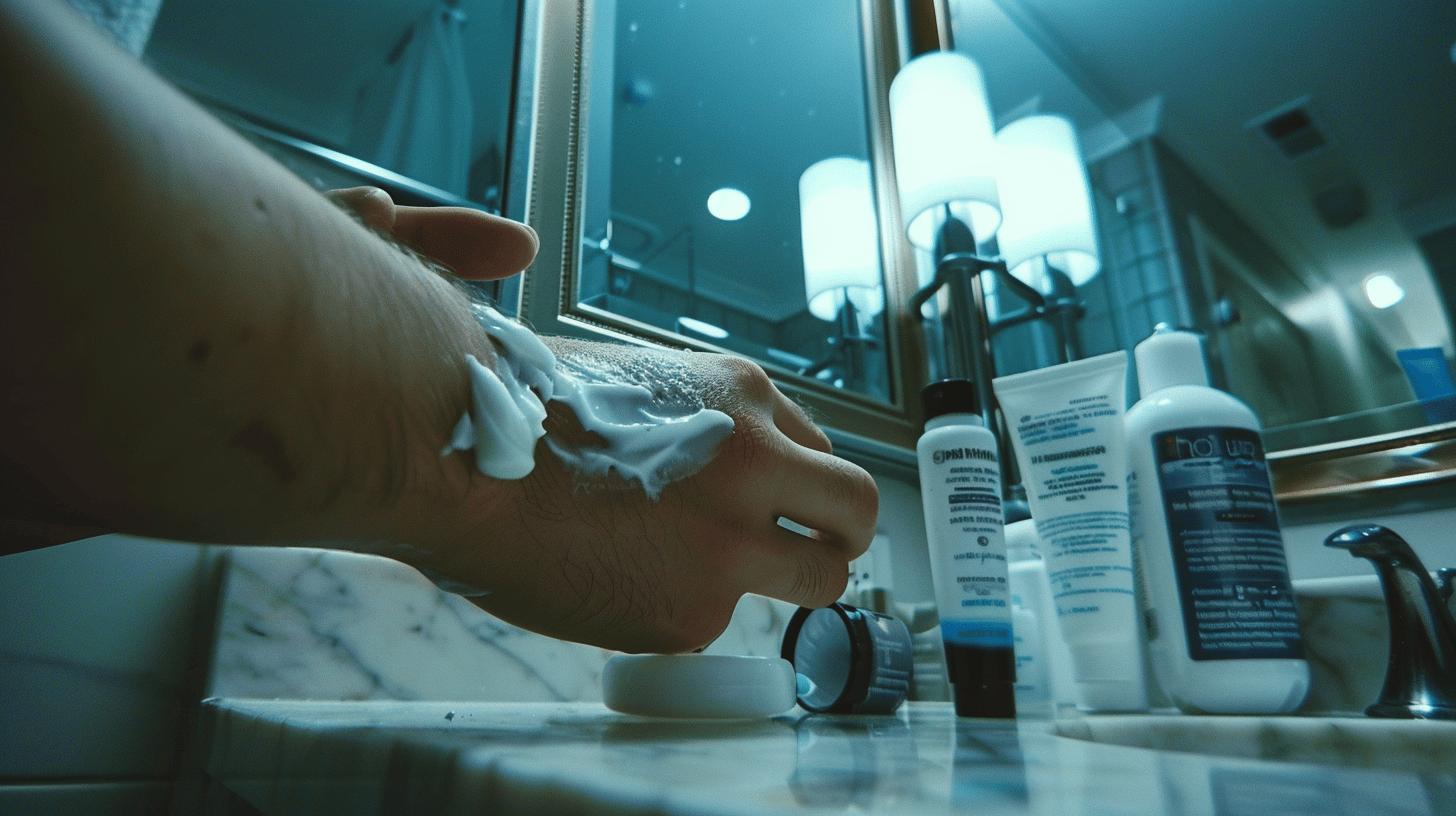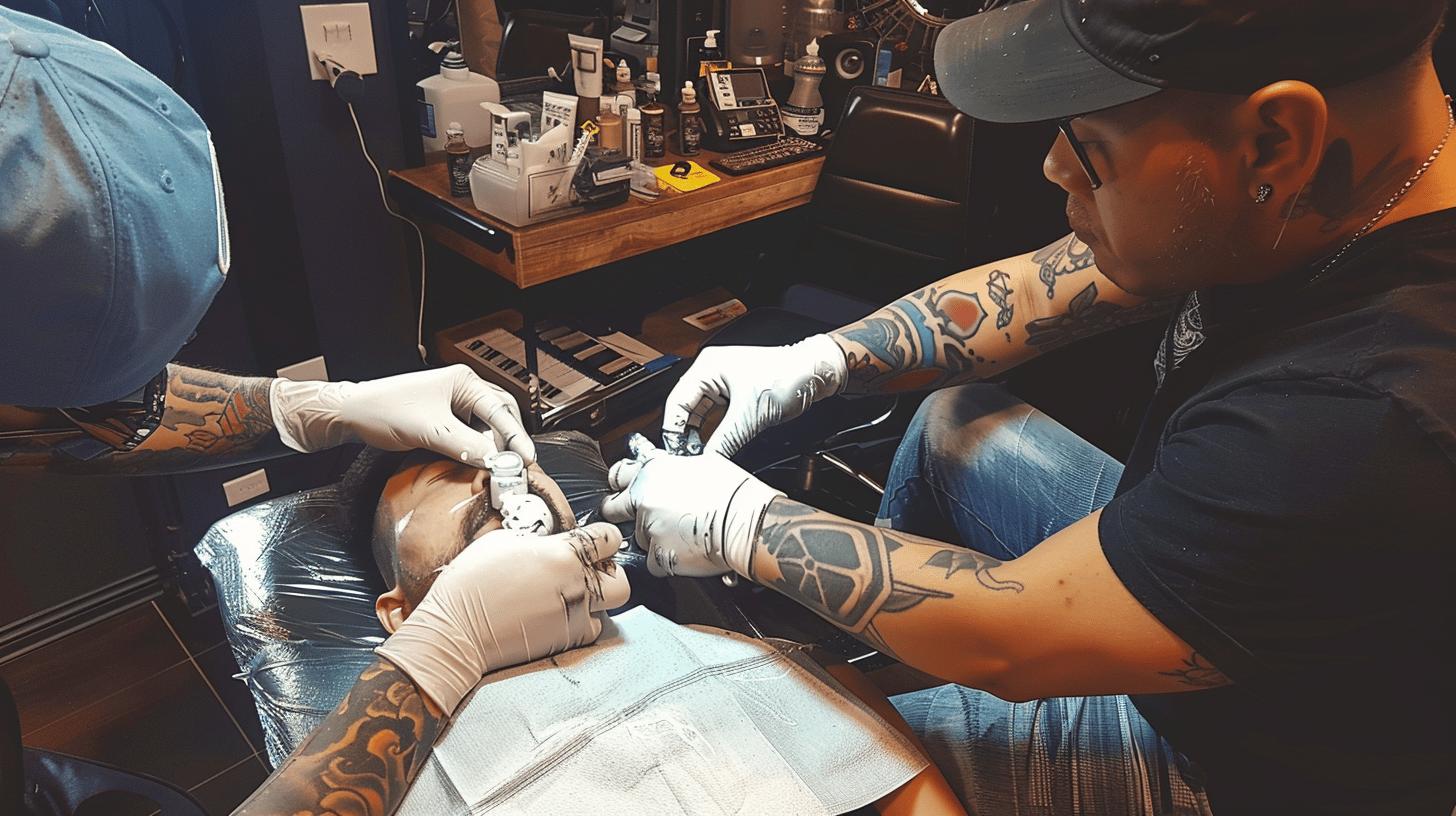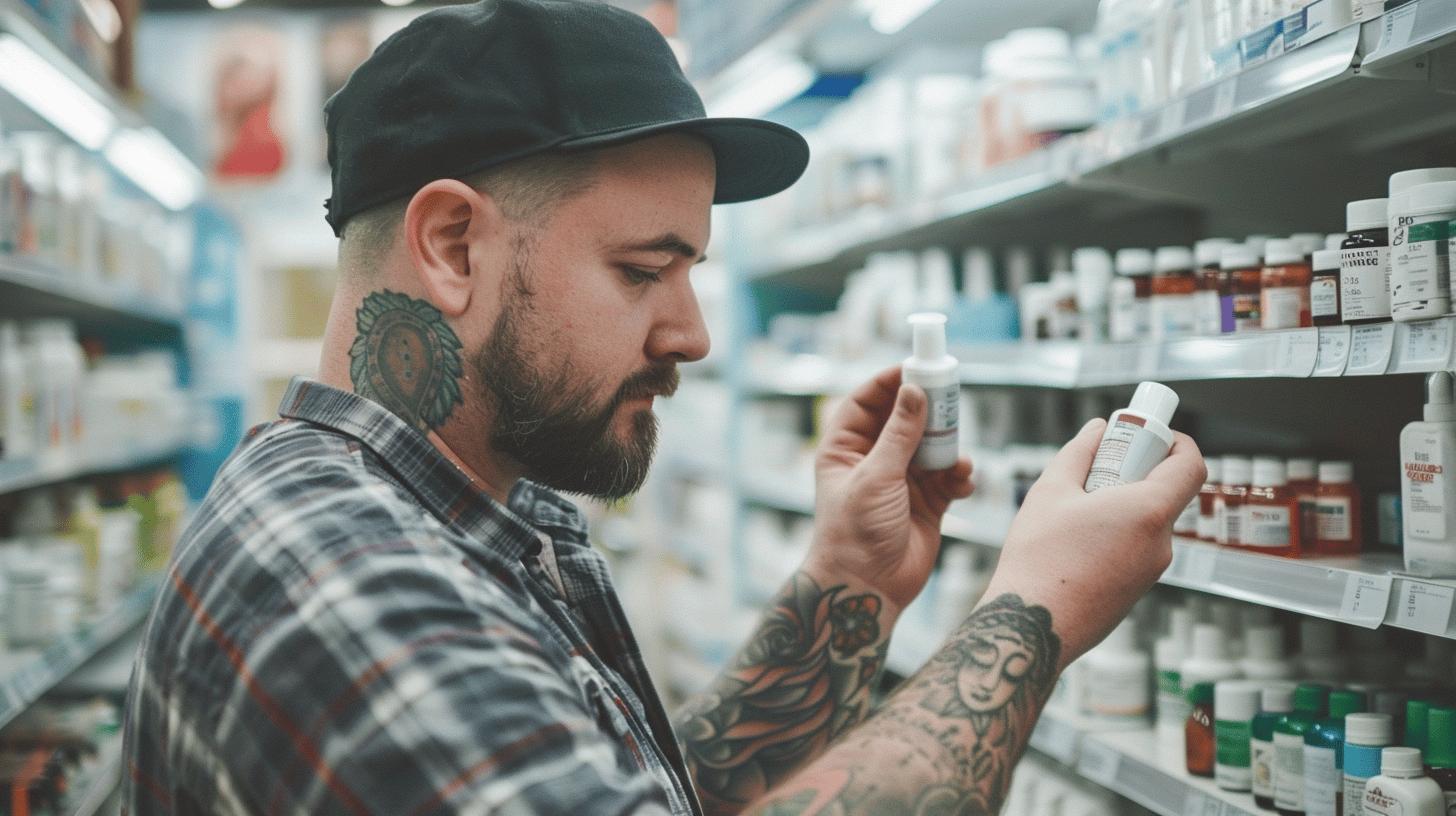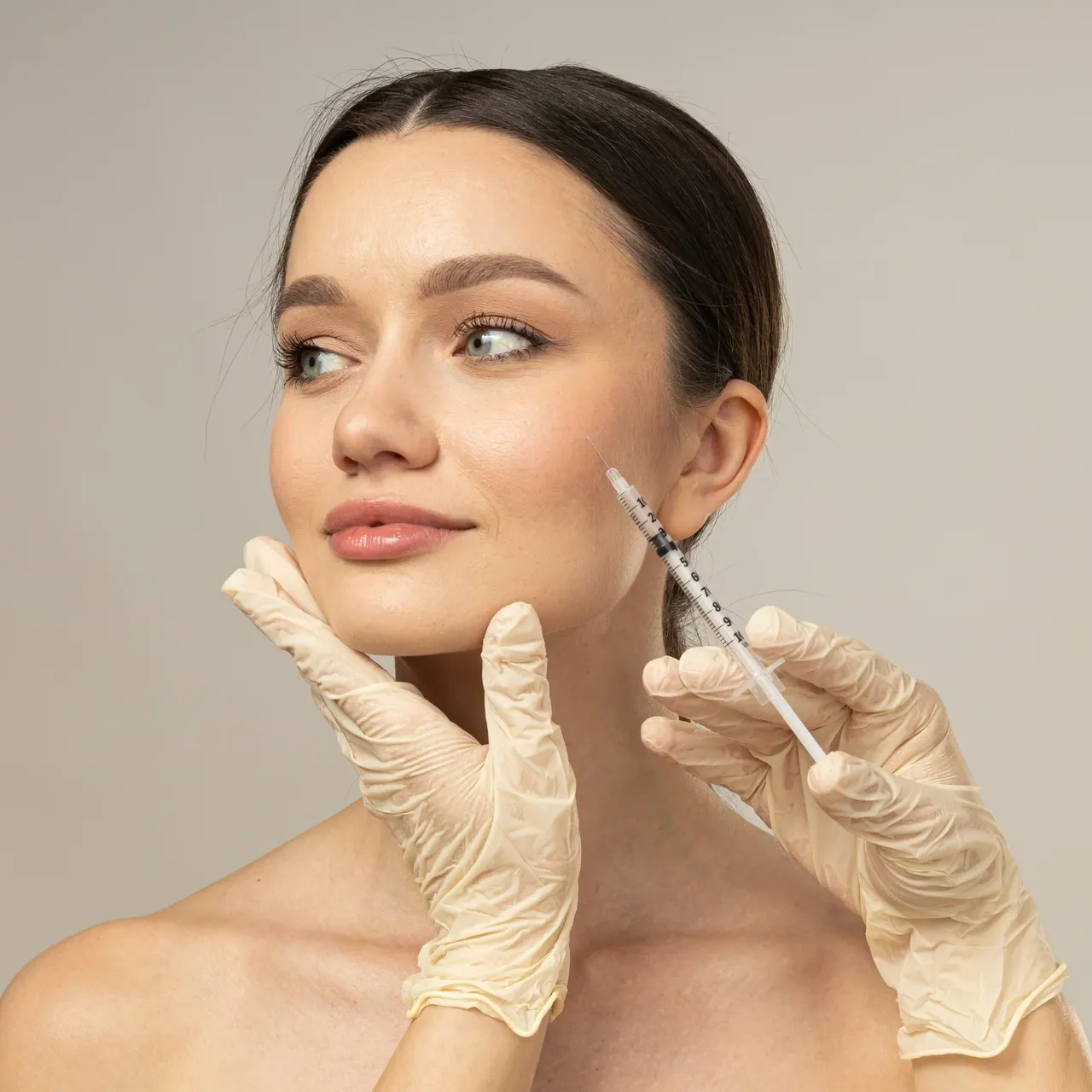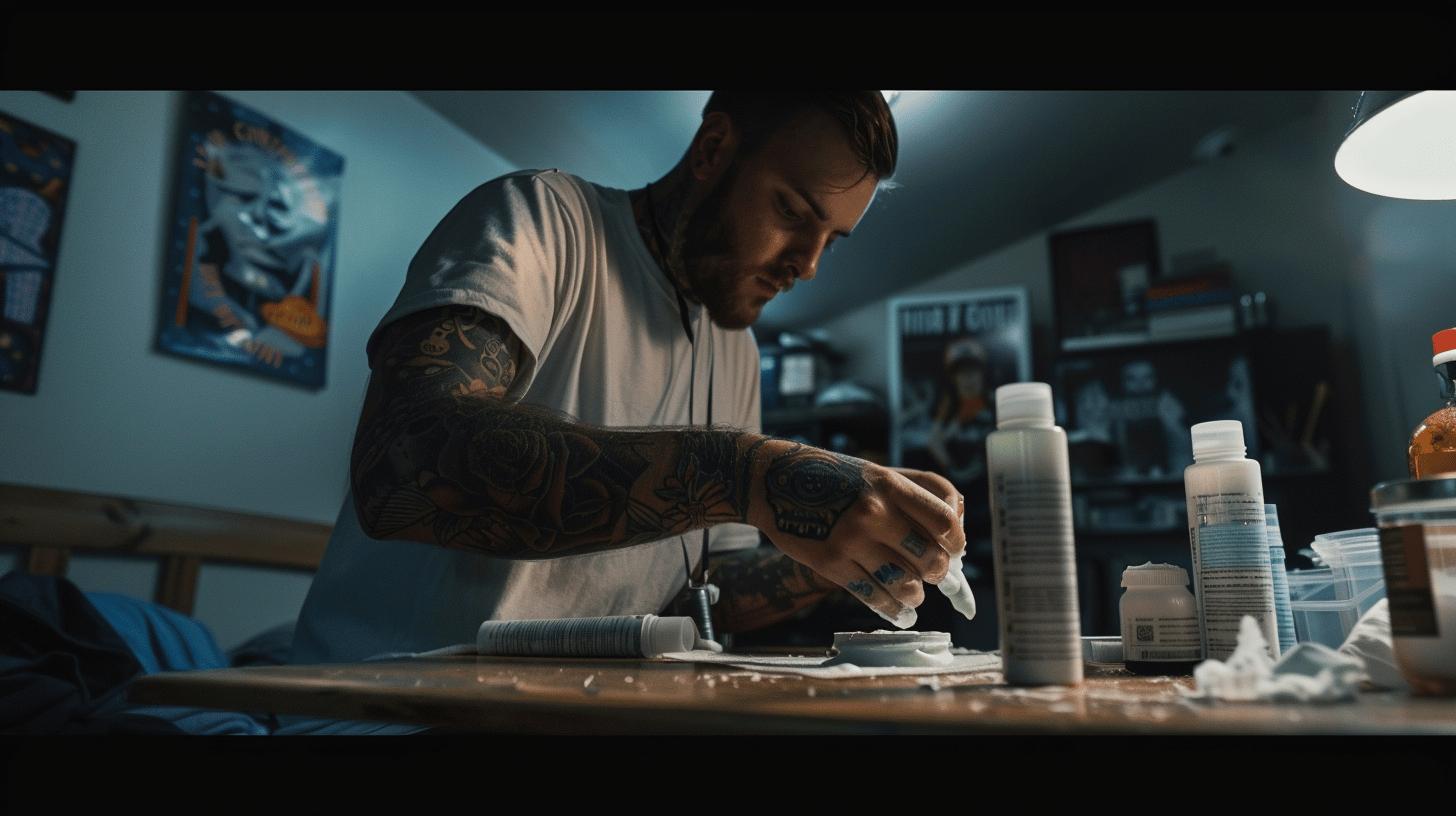Tattoo Numbing Cream Showdown: Lidocaine for a Pain-Free Ink Experience
Is tattoo pain just part of the deal these days, or have we all been ignoring an easier way? Lidocaine numbing cream for tattoos is changing the game, making those long sessions far more bearable. Whether you’re eyeing a full sleeve or a quick ankle piece, choosing the right tattoo numbing cream can be the difference between gritted teeth and relaxed chats. Lidocaine, found in trusted options like Emla, gets to work fast, blocking nerve signals before the first needle touches skin. If you’re curious about tattoo numbing but unsure where to start, discover Emla and other top picks here.
What Is Lidocaine Numbing Cream for Tattoos and How Does It Work?
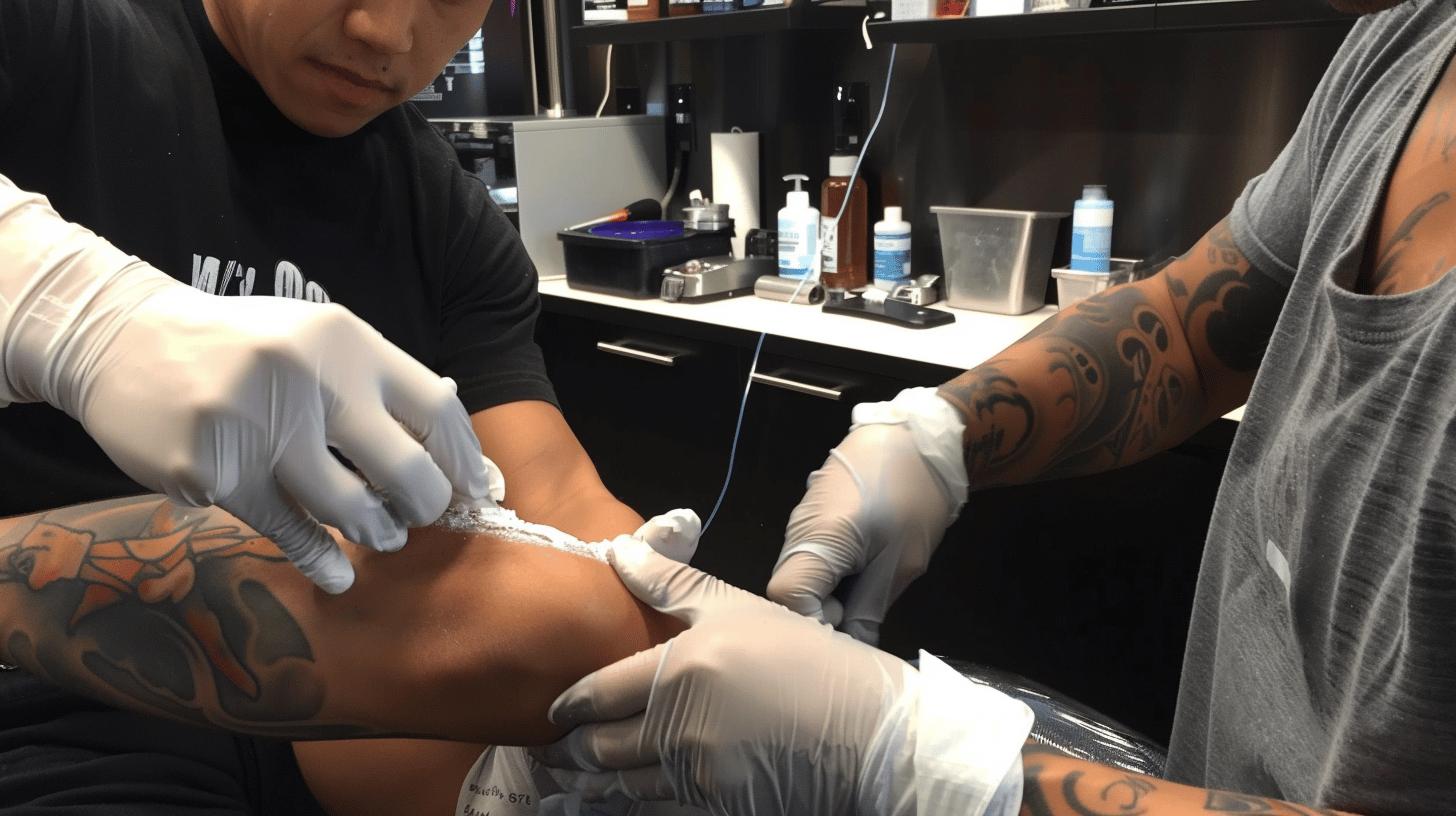
Lidocaine numbing cream for tattoos is a topical anaesthetic designed to ease the pain of getting a tattoo by temporarily numbing the skin. It works by blocking pain signals from the nerve endings in the skin to the brain.
How does lidocaine numbing cream work during a tattoo session?
Lidocaine numbing cream works by penetrating the outer layers of the skin and temporarily numbing the nerve endings. This reduces the amount of pain felt during the tattoo process.
The active compound used is lidocaine, a local anaesthetic trusted for both medical procedures and cosmetic treatments like microblading and laser hair removal. When applied correctly, tattoo numbing cream can make the tattoo experience much more manageable, especially for sensitive areas or longer tattoo sessions.
How strong is over-the-counter lidocaine cream for tattooing?
Most over-the-counter tattoo numbing creams contain between four percent and five percent lidocaine, which is the maximum strength allowed without a prescription.
Popular options like Emla cream, a trusted brand available to buy in the UK, contain five percent lidocaine. Emla is especially well-known among tattoo artists and clients alike for its consistent numbing effect and reliable pain relief.
How quickly does lidocaine cream for tattooing start working, and how long does it last?
Lidocaine creams typically start to numb the skin within 15–30 minutes after application. Their numbing effect usually lasts between two and four hours, depending on factors like skin type, body area, and the thickness of the applied layer.
For the best results, users should apply a thick layer of tattoo numbing cream 30–60 minutes before the tattoo appointment and cover the area with plastic wrap (cling film) to help the cream absorb into the skin more effectively.
Here’s a quick breakdown:
| Feature | Details |
|---|---|
| Active Ingredient | Lidocaine (4–5%) |
| Application Time | 30–60 minutes before session |
| Onset of Effect | 15–30 minutes |
| Duration of Effect | 2–4 hours |
| Common Brands | Emla, LMX |
Numbing creams come in different formulations, but topical lidocaine creams like Emla numbing cream are particularly popular for their proven effectiveness during both tattooing and cosmetic procedures involving needles or lasers.
Using a tattoo numbing cream correctly can make a big difference, especially if it’s your first tattoo or you’re planning a longer tattoo session.
Best Lidocaine Numbing Creams for Tattoos in the UK: Top Picks and Reviews
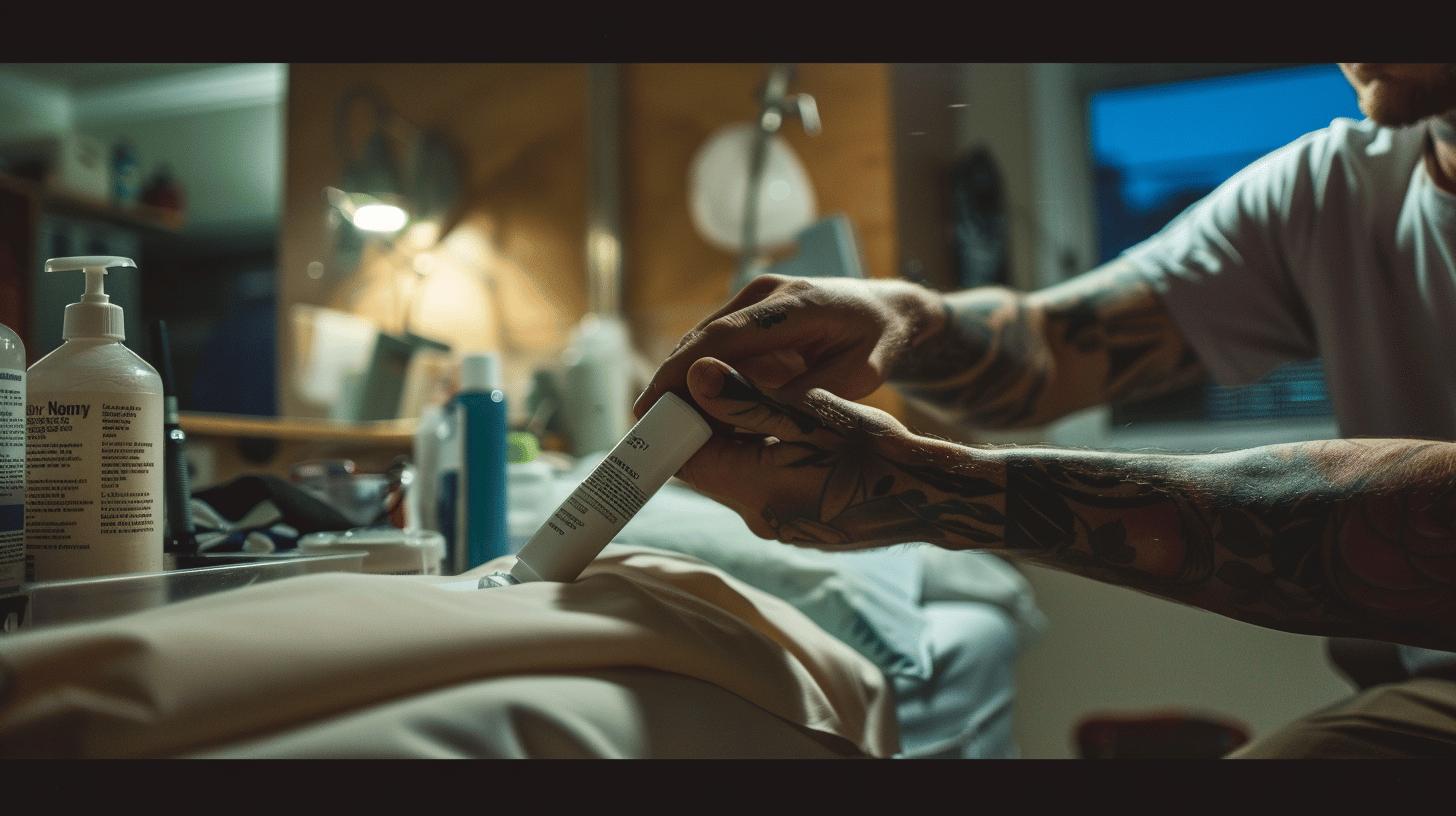
Choosing the best tattoo numbing cream UK artists and clients trust can make a real difference to your tattoo experience. Here’s a breakdown of some of the top-rated options based on tattoo numbing cream reviews and expert feedback.
Which numbing creams are considered the best for tattoos in the UK?
The best options include Ebanel Numb 520, Dr. Numb, Zensa Numbing Cream, and Emla.
Each of these numbing creams come with their own benefits depending on your tattoo session needs and skin sensitivity:
- Ebanel Numb 520
Contains 5% lidocaine for maximum strength. Loved for its fast onset and consistent numbing effect. - Dr. Numb
Another 5% lidocaine cream, widely used by professional tattoo artists. Known for reliable pain relief during longer tattoo sessions. - Zensa Numbing Cream
Formulated for sensitive skin. Although slightly pricier, Zensa offers a gentler numbing effect ideal for first tattoo experiences or cosmetic procedures like microblading. - Emla
A trusted brand often recommended by medical professionals. Emla cream contains a combination of lidocaine and prilocaine, offering a reliable topical anesthetic performance for both tattoos and laser tattoo removal.Product Key Features Best For Ebanel Numb 520 5% lidocaine, fast-acting Longer tattoo sessions Dr. Numb 5% lidocaine, consistent relief Professional tattoo work Zensa Numbing Cream Gentle on sensitive skin First tattoo, cosmetic procedures Emla Cream Combination of lidocaine and prilocaine General tattoo and laser procedures
Where can you buy a numbing cream like these in the UK?
You can find these tattoo numbing creams at high street stores like Boots and Superdrug. For online shoppers, tattoo numbing cream Amazon UK listings often stock genuine products. Revolve Medicare is another reliable pharmacy that offers UK-registered options like Emla cream and LMX cream.
When you’re getting a tattoo, using a high-quality topical lidocaine product can ease the pain of getting new ink without affecting the tattoo colour or the natural healing process. Always buy emla or similar trusted brands to avoid unlicensed or fake medicines which may cause allergic reactions or interfere with the tattoo process.
Buying from recognised retailers ensures you get a genuine topical anesthetic that will properly numb the skin and deliver the numbing effect needed for a smoother tattoo appointment.
How to Properly Apply Lidocaine Numbing Cream for Tattoos
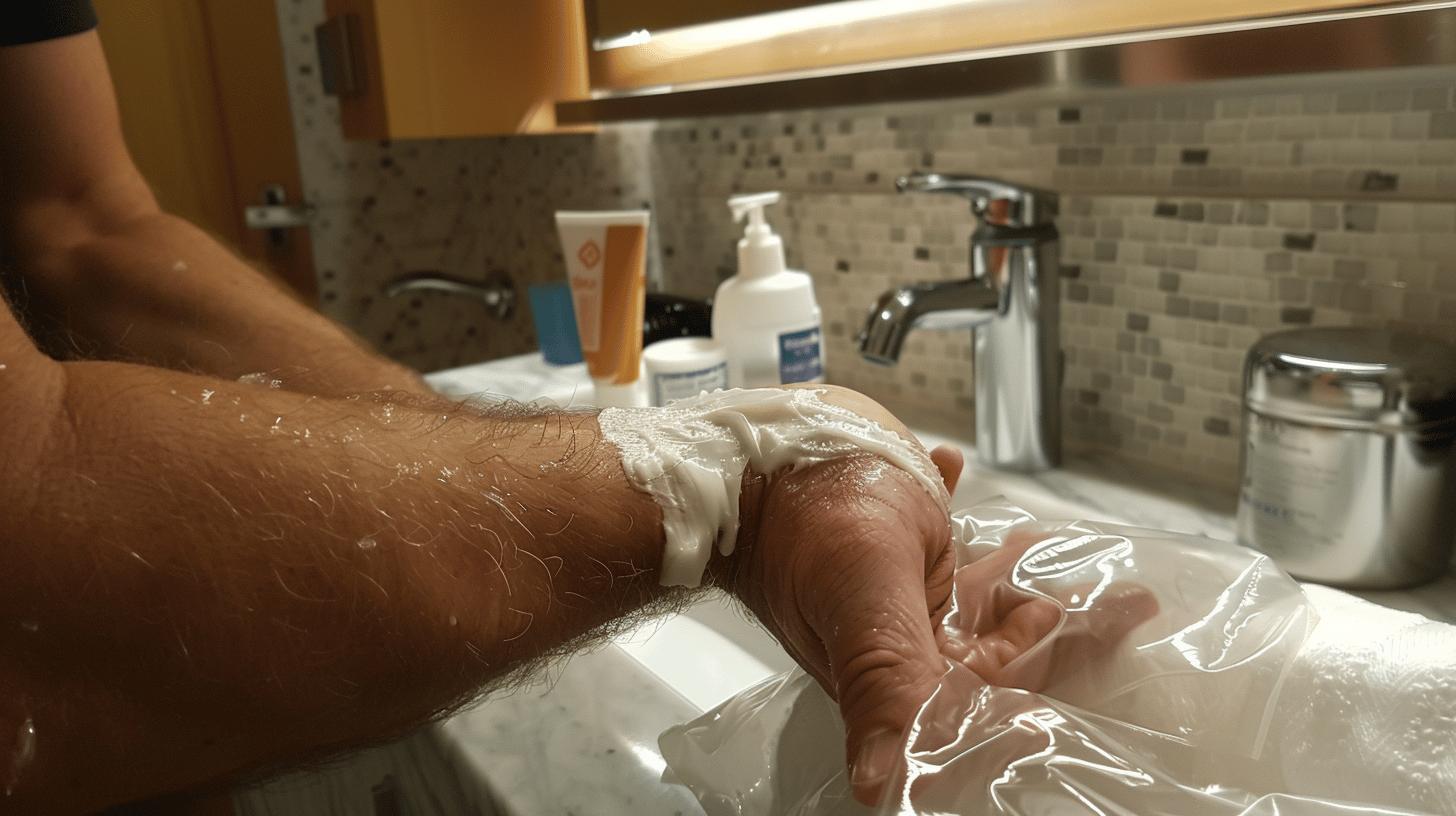
How to use numbing cream for tattoos correctly?
Apply a thick 1/8 inch layer of lidocaine cream 30–60 minutes before the tattoo appointment and cover the area with plastic wrap.
Getting a tattoo can be a lot smoother if the numbing cream is used properly. Correct application ensures the numbing agent penetrates the skin layers effectively, offering real pain relief during the tattoo process.
Here’s a step-by-step guide following proper tattoo numbing application instructions:
- Clean the area of skin thoroughly with soap and water. Dry completely.
- Apply a thick layer (about 1/8 inch) of topical lidocaine or your chosen tattoo numbing cream without rubbing it in.
- Cover the area with plastic wrap (cling film) to trap body heat and help the numbing cream absorb into the skin.
- Leave the wrap on for 30–60 minutes before the tattoo session starts.
- Remove the plastic wrap and wipe away any excess numbing cream just before the tattoo artist begins.
- Inform your tattoo artist that numbing cream has been used, so they can adjust their tattooing technique if necessary.
Covering the area with plastic wrap is essential. It creates a warm environment that allows the topical anaesthetic to properly penetrate deeper skin layers and deliver the full numbing effect.
How long does peak numbing last after applying cream?
Peak numbing typically occurs between 30–60 minutes after applying the cream.
Following pre-tattoo numbing tips like using a thick layer and wrapping the skin properly will help achieve maximum numbing. Skipping steps or using a thin layer can cause uneven numbing or a shorter-lasting effect, making the tattoo experience more uncomfortable.
Many tattoo artists recommend trusted brands like Emla cream because emla numbing cream provides consistent results during both professional tattoo and cosmetic procedures. Whether you are planning your first tattoo or adding to your body art collection, knowing how to apply cream before tattoo sessions can ease the pain of getting inked.
| Step | Instruction |
|---|---|
| 1 | Clean and dry the skin |
| 2 | Apply a thick layer (1/8 inch) of numbing cream |
| 3 | Cover the area with plastic wrap |
| 4 | Wait 30–60 minutes |
| 5 | Remove wrap, wipe off excess cream |
| 6 | Begin tattoo session |
Using the right method helps the numbing cream work as intended, providing reliable pain relief for longer tattoo sessions or sensitive areas. Correct application also reduces the risk of allergic reactions and supports the natural healing of the new tattoo.
How Long Does Lidocaine Numbing Cream Last During Tattoo Sessions?
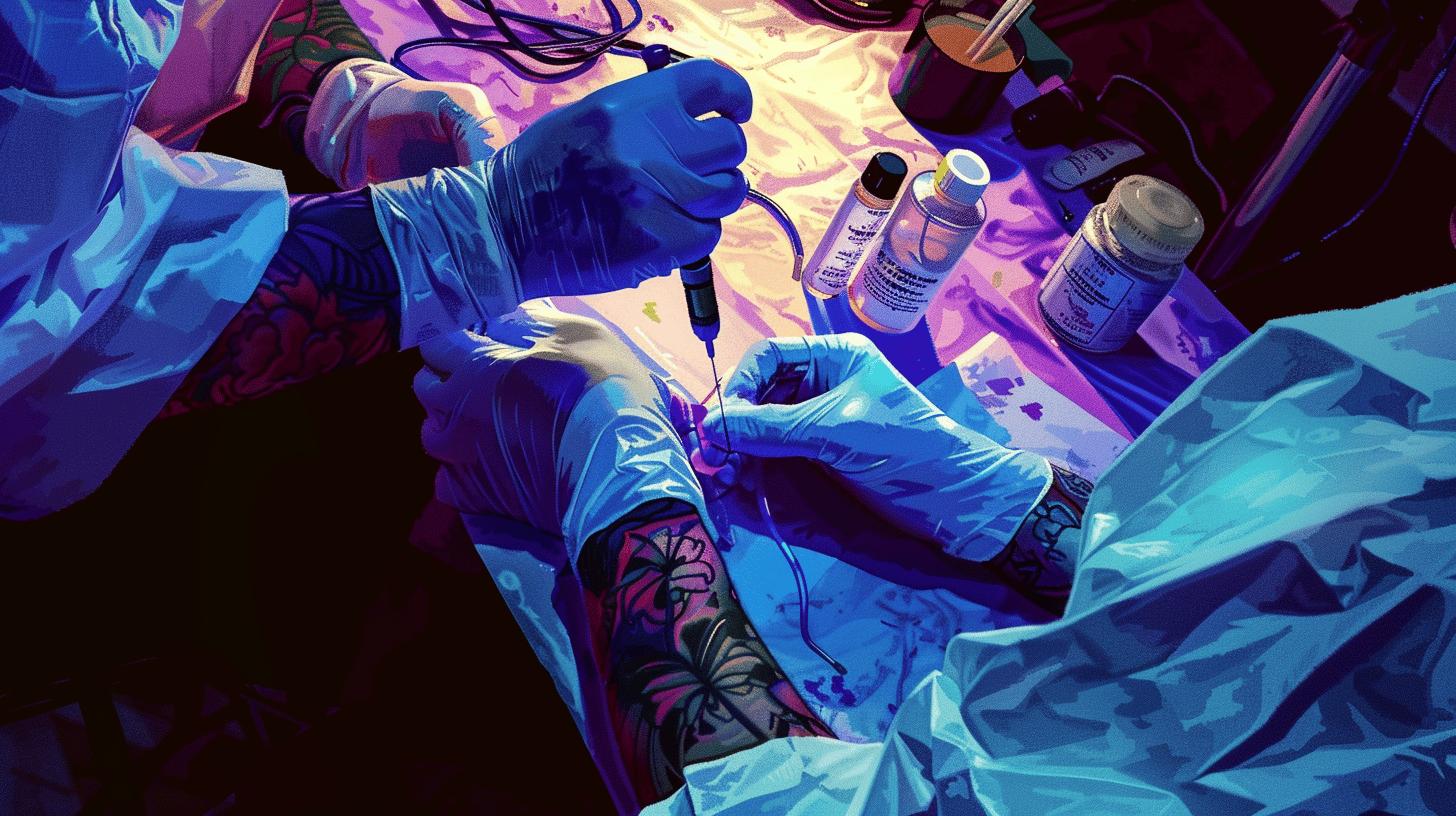
How long does numbing cream last during a tattoo session?
Lidocaine-based numbing creams typically last between 2 to 4 hours after proper application.
The tattoo numbing cream duration can vary depending on skin type, the tattoo process length, and the quality of the topical anesthetic used. Some premium options claim a numbing effect of up to 5 hours, but this isn’t guaranteed for everyone.
When using a topical lidocaine cream like emla, the numbing agent begins to penetrate and numb the skin within 30–60 minutes of application. The body area, thickness of the applied layer, and even individual pain tolerance can slightly alter how long the numbing cream helps during the tattoo session.
Can numbing cream be reapplied during longer tattoo sessions?
Reapplication is difficult and often disruptive.
During longer tattoo sessions, topping up the numbing cream isn’t straightforward. Once the skin has been broken by the needle, reapplying topical lidocaine creams like emla is not recommended. It could interfere with tattoo care, healing, and even the tattoo colour. For tattoos expected to exceed 4 hours, a discussion with the tattoo artist beforehand about pain management options is crucial.
Here’s a breakdown of how long numbing creams last and what can affect the tattoo numbing for long sessions:
| Factor | Impact on Numbing Duration |
|---|---|
| Skin Type | Thicker skin may reduce numbing effect duration |
| Area of Skin | More sensitive areas may feel pain sooner |
| Cream Quality | Topical anesthetics with 5% lidocaine offer longer relief |
| Application Method | Applying a thick layer and covering with plastic wrap helps maximise numbness |
| Session Length | Sessions over 4 hours may outlast the numbing effect |
Using a trusted brand like emla cream, applying a thick layer, and covering the area with plastic wrap (cling film) before the tattoo appointment will give the best chance of lasting numbness. Always make sure to buy a numbing cream from reputable sources to avoid unlicensed or fake medicines that can cause allergic reactions.
When preparing for your next tattoo, understanding how long numbing creams come into play can make the tattoo experience much more manageable.
Comparing Emla and TKTX for Tattoo Numbing: Which Is Better?
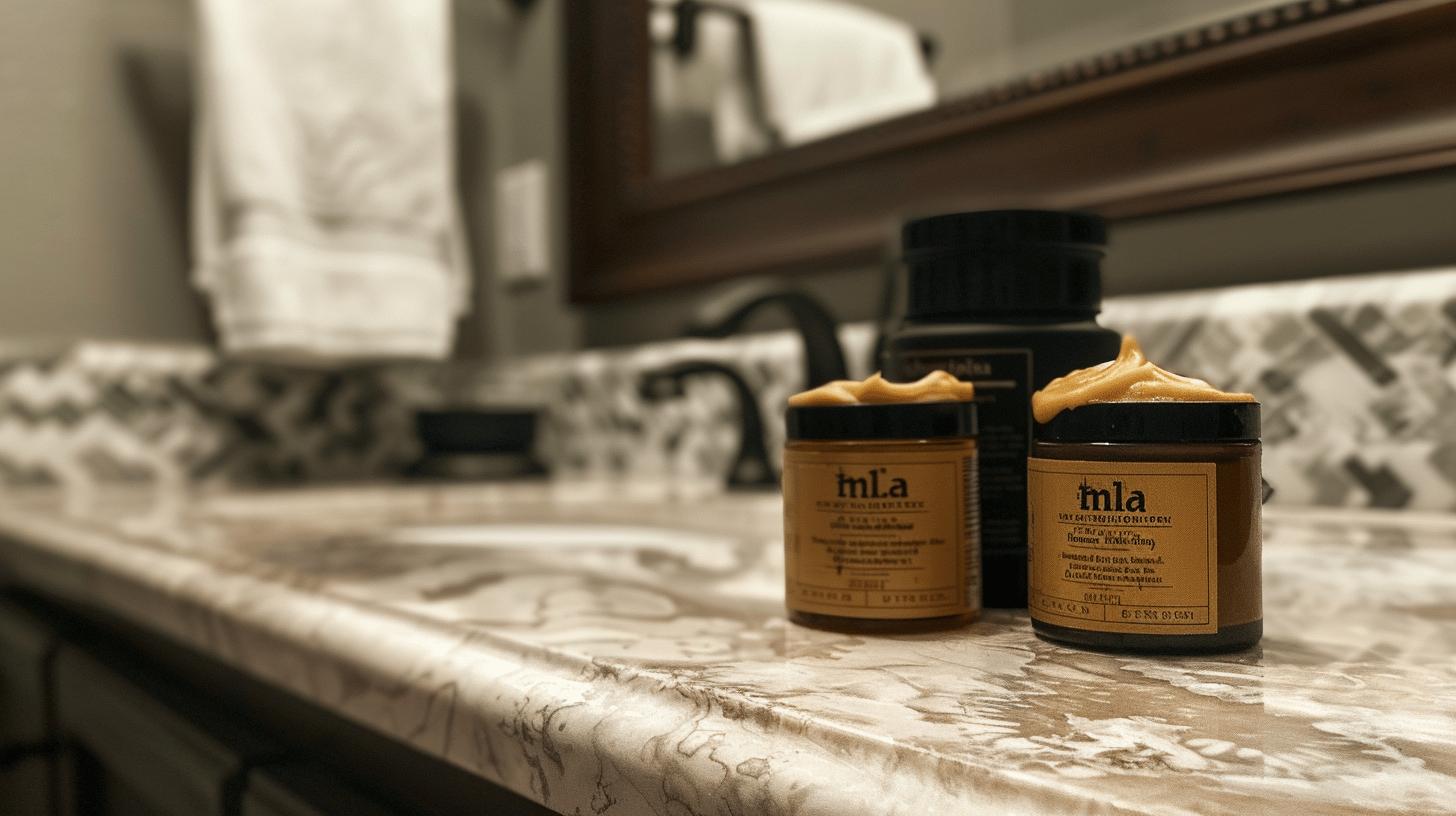
Which numbing cream is better for tattoos: Emla or TKTX?
Emla is highly trusted for its reliable and steady numbing effect, while TKTX offers stronger and faster-acting options but varies depending on the version used.
When comparing emla cream for tattoos with tktx numbing cream uk products, several factors come into play, including how quickly the numbing starts, how long it lasts, and how reliable the pain relief is during the tattoo process.
Emla Cream
Emla numbing cream contains five percent lidocaine mixed with prilocaine, making it one of the safest and most consistent topical anesthetic options available to buy for temporarily numbing the skin. It is widely used for medical procedures, cosmetic procedures like microblading, and laser tattoo removal.
- Takes about 30–60 mins to fully numb the skin.
- Lasts 2–4 hours depending on the area of skin and application method.
- Known for a gradual, steady onset, making it reliable for professional tattoo work.
- Must be applied as a thick layer and covered with cling film to absorb into the skin properly.
TKTX Numbing Cream
TKTX numbing creams come in various strengths, indicated by colour (yellow, green, blue versions). The strongest tktx for tattoos can deliver a faster onset and longer numbing effect compared to emla but carries more variability.
- Some versions claim numbness in just 20–30 minutes.
- Effects can last up to 4–6 hours depending on the product strength and skin type.
- Stronger formulas may contain additional numbing agents like benzocaine.
- Genuine tktx must be purchased carefully, as unlicensed or fake medicines may cause allergic reactions or interfere with tattoo care.
Emla vs TKTX Tattoo: Pros and Cons
Here’s a quick comparison:
| Factor | Emla Cream | TKTX Cream |
|---|---|---|
| Active Ingredients | 5% lidocaine, prilocaine | Varies (lidocaine, benzocaine) |
| Onset Time | 30–60 mins | 20–30 mins |
| Duration | 2–4 hours | 4–6 hours (varies) |
| Consistency | Highly reliable | Varies by version |
| Risk of Allergic Reactions | Low | Higher if fake product |
| Best For | Medical, cosmetic, professional tattoo | Longer tattoo sessions |
When deciding between emla numbing cream and tktx, the choice often depends on the tattoo session length and the individual’s skin sensitivity. Emla is available widely across pharmacies and trusted by many tattoo artists for consistent results, while those planning a longer tattoo or seeking faster numbing may want to buy a numbing cream like genuine tktx — but with careful sourcing to avoid fake versions.
Choosing the right topical lidocaine cream can greatly ease the pain of getting tattoos and improve the overall tattoo experience. Always opt for UK-registered products and apply a thick layer covered with plastic wrap before your tattoo appointment for the best numbing effect.
Potential Side Effects and Risks of Lidocaine Numbing Cream for Tattoos
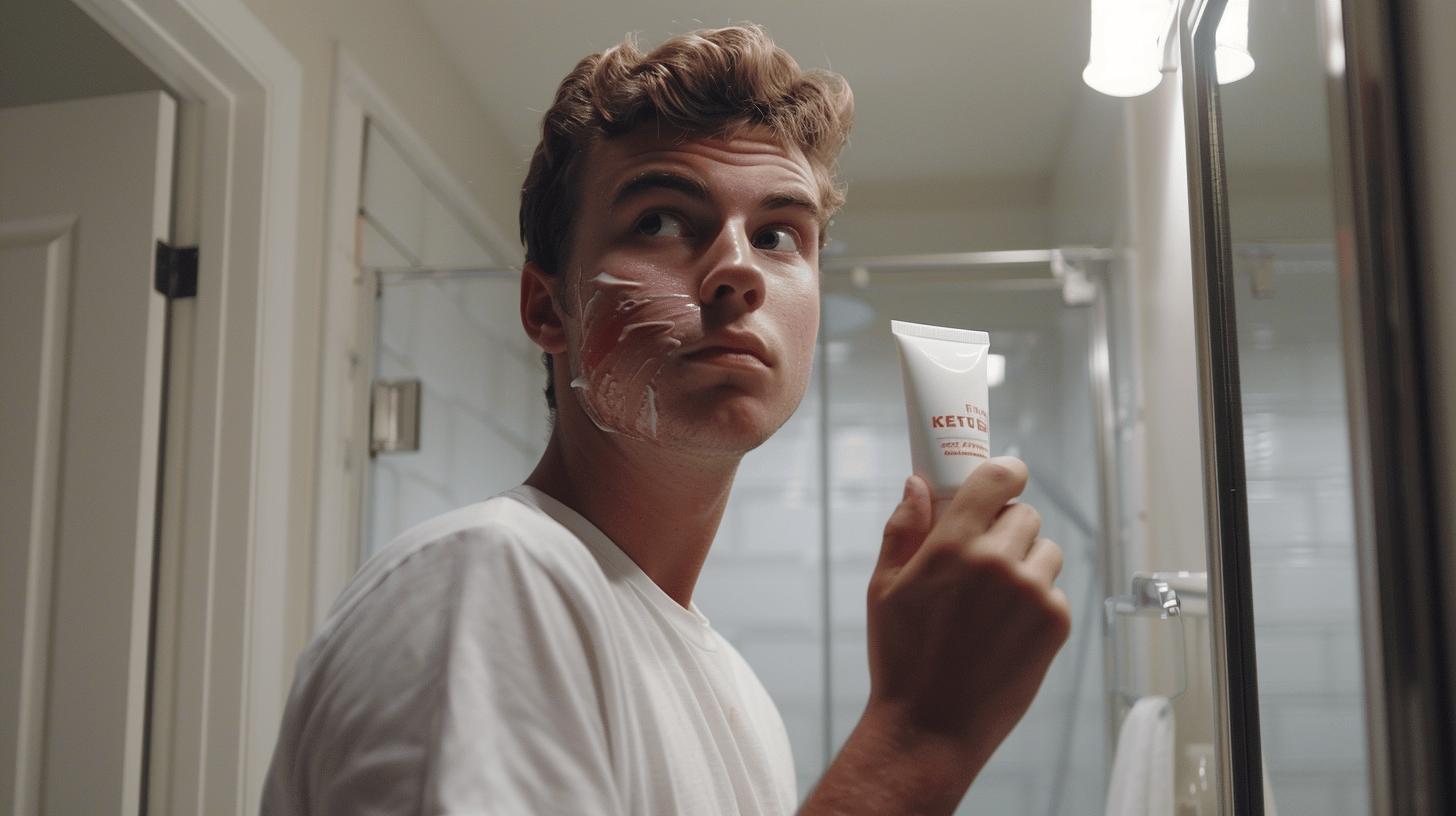
What are the common numbing cream side effects when used for tattoos?
The most common side effects are redness, swelling, and mild irritation at the site of application.
When using a tattoo numbing cream, especially ones containing topical lidocaine like emla cream, the skin may react mildly. These reactions are usually temporary and resolve shortly after the tattoo session. Redness and swelling happen because the body recognises the numbing agent as a foreign compound.
Can you have an allergic reaction to numbing cream?
Yes, allergic reactions to numbing cream are possible but rare.
An allergic reaction to numbing cream may present as intense itching, rash, hives, or difficulty breathing. Although products like emla are designed to be safe for medical procedures and cosmetic purposes, individual sensitivities to lidocaine, prilocaine, or other ingredients can cause an unexpected response. This is why performing a patch test 24 hours before your tattoo appointment is strongly recommended.
Are numbing creams safe for tattoos?
When used correctly, numbing creams are safe for tattoos.
Using a topical anesthetic like emla numbing cream or other trusted brands can ease the pain of getting a tattoo without interfering with the tattoo process. Applying a thick layer, covering the area with plastic wrap, and timing the numb the skin process properly helps ensure the numbing effect works as intended without harming the skin.
Problems mainly occur when people misuse numbing creams. Applying a very thick layer, leaving it on too long, or using large amounts over wide areas of skin increases the risk of serious side effects like methemoglobinemia, a rare blood disorder. This risk is higher with products containing benzocaine.
Can lidocaine tattoo reactions affect healing?
Yes, improper use of numbing cream can interfere with natural healing.
If a numbing cream is left on for too long or reapplied after the skin is broken during the tattoo session, it can slow down tattoo care and healing. It may even affect the tattoo colour and final appearance of the ink.
Here’s a quick overview of potential side effects:
| Side Effect | Details |
|---|---|
| Redness and Swelling | Temporary irritation after application |
| Itching or Rash | Possible allergic reaction to lidocaine or other ingredients |
| Methemoglobinemia | Rare blood disorder linked to misuse, higher risk with benzocaine |
| Delayed Healing | Possible if cream is misused during tattoo process |
Performing a patch test before using a numbing cream at your next tattoo session, choosing a trusted brand available to buy in the UK, and following proper application steps can prevent most problems. Always communicate with your tattoo artist about any products you apply before getting tattoos.
Where to Buy Lidocaine Numbing Cream for Tattoos in the UK
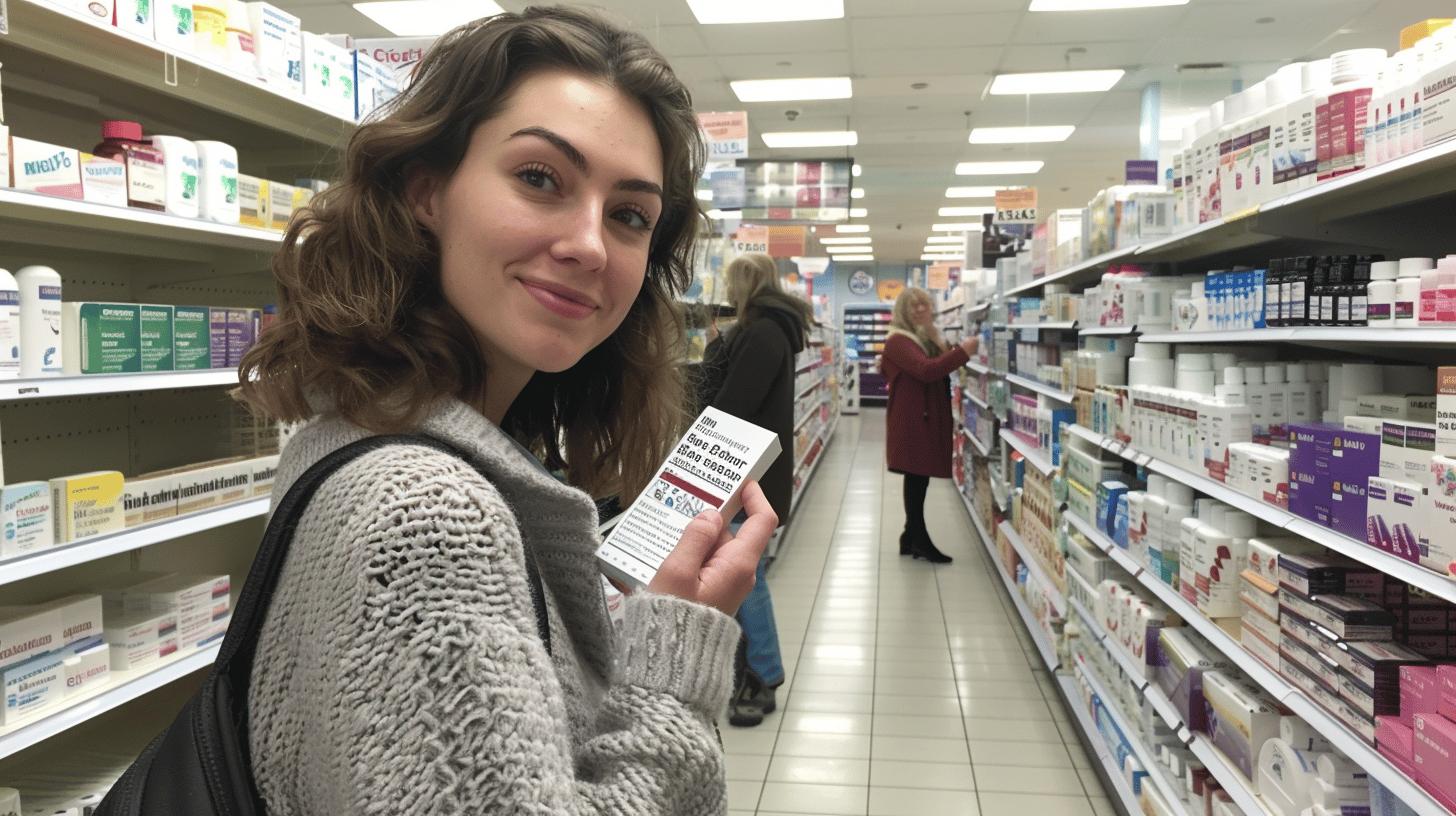
Where can you buy lidocaine numbing cream for tattoos in the UK?
Lidocaine numbing cream for tattoos is available from trusted retailers like Boots, Superdrug, Tesco, Asda, and Revolve Medicare.
When buying tattoo numbing cream online, it’s important to choose UK-registered pharmacies or verified sellers. Amazon UK lists many popular brands, but checking for FDA-compliant and UK-approved labels helps avoid unlicensed or fake medicines that can cause allergic reactions or affect tattoo care.
Can you find tattoo numbing cream near me in high street shops?
Yes, tattoo numbing cream is available at high street shops like Boots, Superdrug, Tesco, and Asda.
Boots and Superdrug often stock emla cream, a trusted brand used for temporarily numbing the skin during tattoo and cosmetic procedures. Tesco and Asda may carry more general topical lidocaine products suitable for easing the pain during the tattoo process.
Is tattoo numbing cream available at Lloyds Pharmacy?
Tattoo numbing cream Lloyds Pharmacy stocks includes options like emla numbing cream and LMX cream, both containing five percent lidocaine.
These options are ideal for professional tattoo sessions, cosmetic procedures like microblading, and laser tattoo removal involving needles or lasers. Emla is available without a prescription and is a topical anesthetic trusted for its consistent numbing effect.
Here’s a quick guide to where you can buy a numbing cream for your next tattoo:
| Retailer | Availability | Notes |
|---|---|---|
| Boots | In-store and Online | Stock emla cream and other topical lidocaine products |
| Superdrug | In-store and Online | Offers trusted brand options for tattoo sessions |
| Tesco | Selected Stores | General lidocaine creams suitable for tattoo numbing |
| Asda | Selected Stores | Affordable topical anesthetic products |
| Amazon UK | Online | Wide range of numbing creams, check for UK-approved labels |
| Revolve Medicare | Online | Specialises in medical-grade topical anesthetics |
| Lloyds Pharmacy | In-store and Online | Buy emla and LMX creams for tattoo and laser procedures |
Buying from recognised stores helps guarantee the numbing cream works effectively to ease the pain of getting tattoos, cosmetic procedures, or laser hair removal. Always check that the product contains four percent to five percent lidocaine and is safe for use during a tattoo appointment.
Choosing the Best Lidocaine Numbing Cream for Your Tattoo Needs
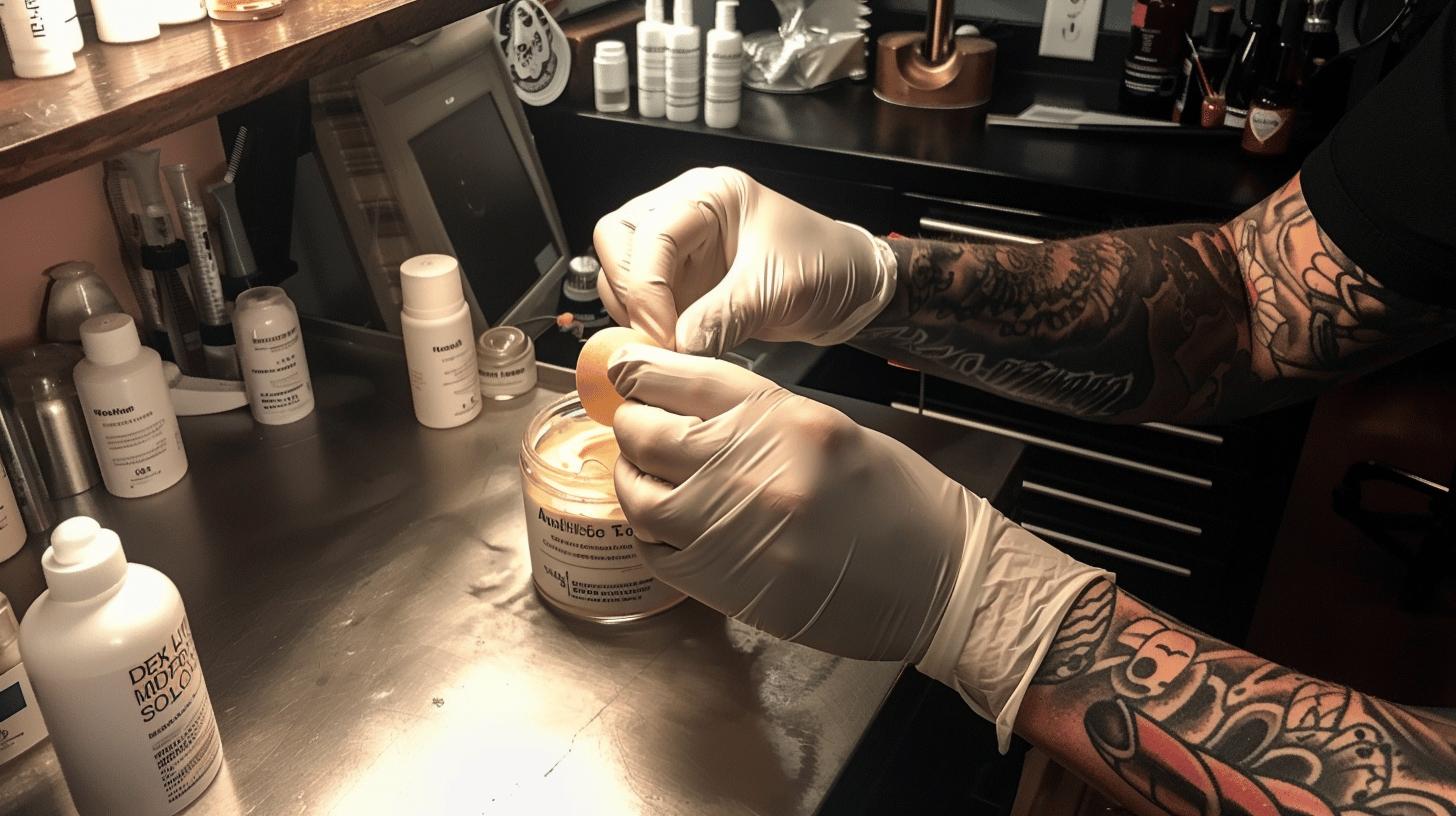
What is the best lidocaine cream for tattoos?
The best lidocaine cream for tattoos contains the maximum over-the-counter strength of five percent lidocaine, offers consistent pain relief, and is trusted by tattoo artists for professional tattoo sessions.
Over-the-counter options like emla cream are widely recommended because they balance strong numbing effect with a safe profile, helping to ease the pain of getting tattoos without interfering with the tattoo process or tattoo care.
Choosing the right tattoo numbing cream depends on several factors:
- Tattoo Session Length
Longer tattoo sessions may require a maximum strength tattoo numbing cream with five percent lidocaine to maintain numbness throughout the process. - Skin Sensitivity
If your skin reacts easily during cosmetic procedures or medical procedures, a gentler topical like emla numbing cream can reduce the chance of allergic reactions while temporarily numbing the skin effectively. - Tattoo Placement
Areas over bone or sensitive spots like ribs and ankles demand stronger pain relief. Using the strongest over the counter numbing cream can significantly improve your tattoo experience in these painful areas. - Pain Tolerance
First tattoo? Consider a trusted brand like emla, which is available to buy in the UK and is ideal for easing the pain of getting a new tattoo without affecting ink or natural healing.
Here’s a quick tattoo numbing cream strength guide:Strength Product Type Best For 5% Lidocaine Maximum strength tattoo numbing cream (e.g., emla cream) Longer tattoo sessions, sensitive areas 4% Lidocaine Standard topical lidocaine cream Shorter tattoos, less sensitive areas When looking to buy a numbing cream, always choose a UK-registered product to avoid unlicensed or fake medicines that could cause complications. Applying a thick layer and covering the area with plastic wrap before your tattoo appointment helps the numbing cream work more effectively by allowing it to penetrate the area of skin properly.
Finding the best lidocaine cream for tattoos ensures smoother sessions, better pain management, and a more enjoyable body art experience, whether it’s your first tattoo or your next tattoo masterpiece.
Real User Experiences: Tattoo Numbing Cream Before and After Results
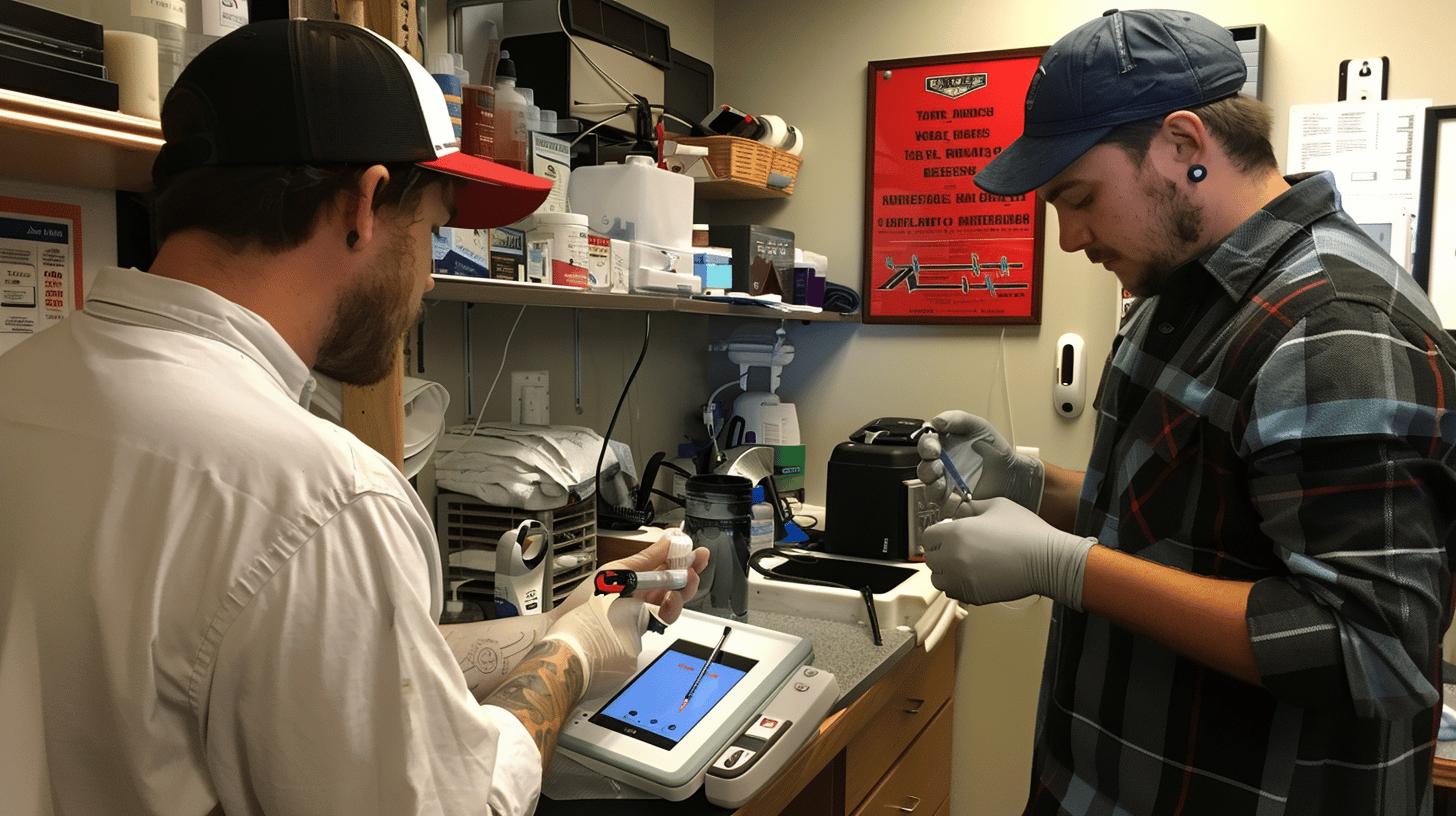
What do real users say about numbing cream before and after tattoo sessions?
Numbing creams significantly reduce pain but don’t eliminate all sensation during a tattoo session.
Reddit users and tattoo numbing cream reddit reviews often describe tattoos with lidocaine cream feedback as overwhelmingly positive when the numbing cream is applied correctly. Many report that while the numbing effect doesn’t completely block every bit of feeling, it makes getting a tattoo far more manageable, especially for longer tattoo sessions or sensitive areas.
How does the experience vary depending on the product and application technique?
The effectiveness depends greatly on the product used and how it’s applied.
Topical lidocaine creams like emla or other trusted brands work best when users apply a thick layer and cover the area with plastic wrap for 30-60 mins before starting the tattoo process. If a thin layer is used or if the user fails to cover the area with plastic wrap, the numbing agent may not penetrate deeply enough to numb the skin effectively. This can lead to patchy numbing or quicker wear-off during the tattoo appointment.
Real-world feedback shows:
- Emla numbing cream offers steady pain relief but needs proper timing and wrapping.
- Stronger creams like genuine tktx can numb the skin faster but vary more in consistency.
- Those getting tattoos for the first time often report that numbing cream helps manage anxiety and pain, improving their overall tattoo experience.
Here’s a quick look at common outcomes reported:Factor User Experience Proper Application Stronger, longer-lasting numbness Thin Layer Application Patchy or short-lived numbing Trusted Brand Used Reliable and safer results Unlicensed Products Risk of allergic reactions and poor numbing Tattoo artists recommend discussing the use of topical anesthetic products like emla cream before starting the tattoo to avoid surprises during the session.
Expert Tips for Safe Tattoo Sessions Using Lidocaine Numbing Cream
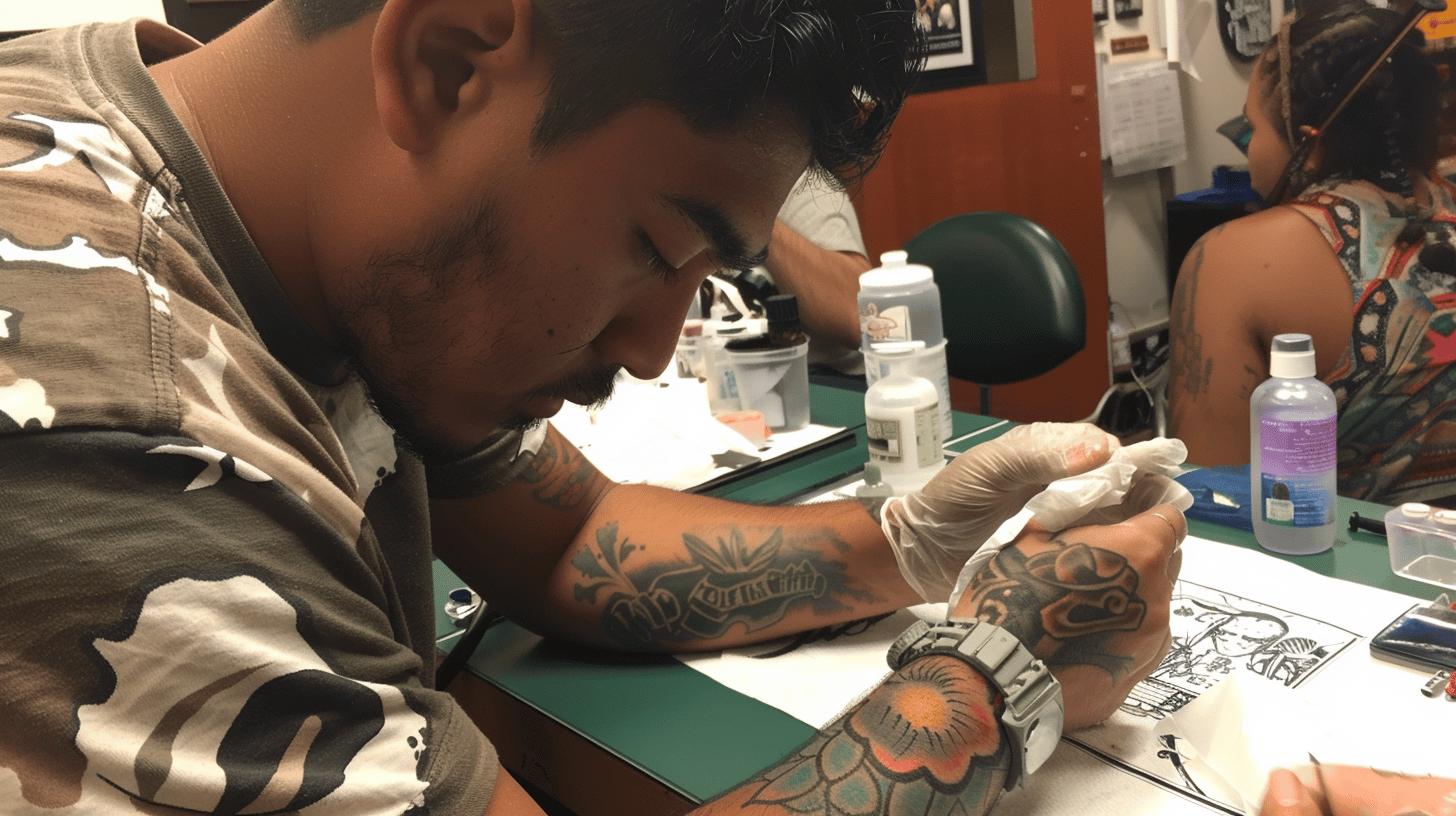
How can you safely use lidocaine cream at a tattoo parlour?
Apply a thick layer of numbing cream 30–60 mins before the tattoo appointment, cover the area with plastic wrap, and inform your tattoo artist.
Using lidocaine at tattoo parlour sessions can make getting a tattoo much more manageable when prepared properly. A topical anaesthetic like emla cream works by temporarily numbing the skin, blocking pain signals during the tattoo process. Applying the cream correctly ensures a strong and consistent numbing effect, minimising discomfort without compromising your tattoo care or ink quality.
What are the best practices for prepping skin with lidocaine cream before a tattoo session?
Follow a structured tattoo pre numbing routine to achieve the best results:
- Clean the area of skin with mild soap and water.
- Dry thoroughly to allow better absorption.
- Apply a thick layer of lidocaine cream without rubbing it in.
- Cover the area with plastic wrap (cling film) to lock in body heat and help the numbing agent penetrate.
- Wait 30–60 mins before removing the wrap and starting the tattoo session.
- Wipe off any excess cream before the tattoo artist begins.
What are the do’s and don’ts for using numbing cream safely?
Here’s a quick guide:
- Do apply a thick layer and cover the area with plastic wrap.
- Do use safe numbing cream brands UK tattoo artists trust, like emla.
- Do discuss your plan to numb the skin with your tattoo artist.
- Don’t apply a thin layer; it won’t properly numb the area of skin.
- Don’t reapply after the tattoo process has started.
- Don’t use unlicensed or fake medicines which may cause allergic reactions.
Action Advice Application Apply a thick layer and cover with cling film Timing Start 30–60 mins before the tattoo appointment Brand Choice Choose trusted brands like emla or other UK-registered options Communication Inform your tattoo artist about using numbing cream Using a trusted topical lidocaine product like emla numbing cream helps ease the pain of getting tattoos, improving the overall tattoo experience without risking the tattoo colour or natural healing process.
Final Words
Choosing the right lidocaine numbing cream for tattoos can make all the difference in your tattoo experience. From understanding how tattoo numbing works to finding the best tattoo numbing cream available in the UK, each step plays a huge role in achieving better pain relief during the tattoo process.
Knowing how to apply lidocaine cream properly, how long tattoo numbing will last, and the risks like allergic reactions to numbing cream ensures safer and smoother tattoo care. Whether you prefer a classic choice like Emla or a stronger option like genuine TKTX, there’s a solution for every body art plan.
Good numbing cream, a trusted tattoo artist, and smart prepping not only help you through the session but also support natural healing, keeping your new tattoo sharp and vibrant. Whether it’s your first ink or your next tattoo, smart choices lead to a more comfortable, professional tattoo experience.
FAQ
Q: What is the strongest numbing cream for tattoos in the UK?
The strongest tattoo numbing cream in the UK typically contains 5% lidocaine, the maximum strength allowed without a prescription. Popular choices include Ebanel Numb 520 and Dr. Numb for effective pain relief during the tattoo process.
Q: Does lidocaine numbing cream work for tattoos?
Lidocaine numbing cream blocks the nerves that send pain signals, helping to numb the skin during a tattoo session. It offers temporary pain relief, although you may still feel some pressure from the tattoo needle.
Q: Why do some tattoo artists not use lidocaine numbing creams?
Some professional tattoo artists avoid using lidocaine numbing creams because they believe it may affect the tattooing process by altering the skin texture. Always discuss pain management options before your tattoo appointment.
Q: What tattoo numbing cream do tattooists recommend?
Tattooists often recommend trusted brands like Emla cream, Zensa, and TKTX numbing cream for their proven numbing effect. Products with at least 5% lidocaine are considered reliable for reducing the pain of getting tattoos.
Q: How long should lidocaine cream be left on before starting a tattoo?
Lidocaine cream should be applied in a thick layer and covered with cling film for 30–60 minutes before your tattoo session. This allows the topical anaesthetic to properly absorb into the skin.
Q: Is TKTX numbing cream good for tattoos?
Genuine TKTX numbing cream, available for sale in the UK, is highly rated among those getting tattoos, laser tattoo removal, or microblading due to its strong numbing effect and faster onset compared to some creams like Emla.
Q: Where can I buy emla numbing cream for tattoo pain relief?
You can buy Emla cream for tattoos at Boots, Superdrug, Tesco, Asda, or online platforms like Amazon UK. Always ensure you buy a genuine numbing cream from a trusted brand to avoid unlicensed or fake medicines.
Q: Can using numbing cream affect the healing of a new tattoo?
Improper use of numbing creams can irritate the area of skin and slow natural healing. Always follow tattoo aftercare advice and only use approved numbing creams like topical lidocaine products to protect your new tattoo.
Q: Is Emla cream safe for use before cosmetic procedures involving microblading or tattoos?
Emla cream is widely used for cosmetic procedures like microblading, laser procedures, and tattoos. It temporarily numbs the skin effectively when applied properly, offering pain relief for procedures involving needles or lasers.
Q: How do I apply numbing cream before getting tattoos?
Apply a thick layer of numbing cream over the area of skin and cover the area with plastic wrap about 30–60 mins before your tattoo appointment. This helps the compound absorb deep enough for topical anaesthetic effect.
Q: Can numbing cream help during longer tattoo sessions?
Numbing cream helps temporarily numb the skin for 2–4 hours, easing the pain of getting a longer tattoo. For extended sessions, discuss additional numbing options with your tattoo artist before starting.
Q: What numbing creams are trusted brands in the UK for tattooing?
Trusted brands include Ebanel, Dr. Numb, Zensa, and Emla, all offering topical lidocaine for getting a tattoo or cosmetic procedures. Choose a UK-registered, medical-grade product to guarantee quality and safety.
Q: What risks are linked to using tattoo numbing creams?
Side effects from tattoo numbing creams can include redness, swelling, or allergic reactions. A patch test 24 hours before application is advised. Avoid unlicensed products to minimise risks during the tattoo experience.
Q: Will numbing creams completely numb the skin for tattoos?
Numbing creams offer significant pain relief but may not completely numb the skin. They help reduce the pain of cosmetic procedures, but you might still feel pressure or minor discomfort during a professional tattoo.
Q: How is TKTX different from Emla for tattoo numbing?
Unlike Emla, genuine TKTX numbing creams offer faster onset, making them popular for body art and laser procedures. Emla contains both lidocaine and prilocaine but acts slower. Choosing depends on tattoo session needs.
Q: Does using lidocaine cream impact tattoo colour or healing?
Using a proper numbing agent like lidocaine does not usually affect tattoo colour when applied correctly. However, incorrect use can irritate the skin or delay the natural healing process, affecting the final tattoo outcome.

